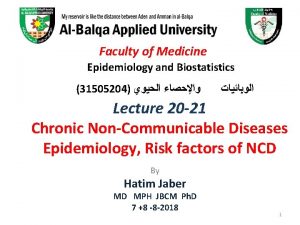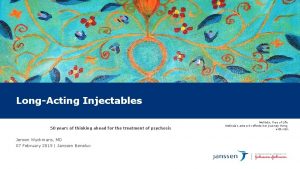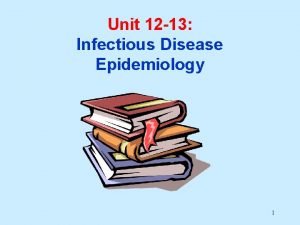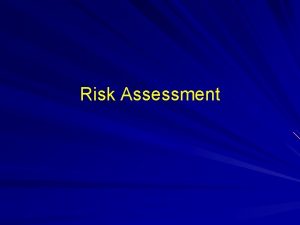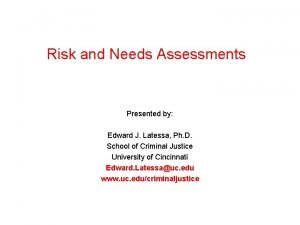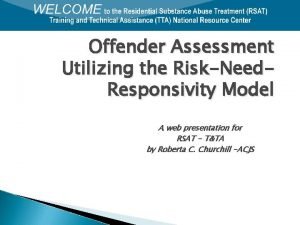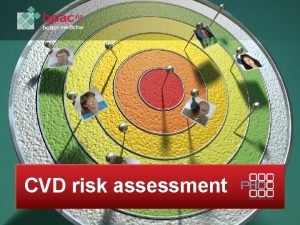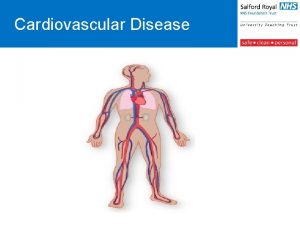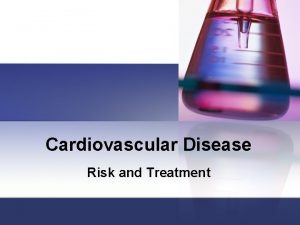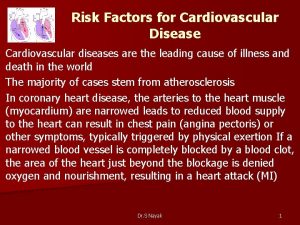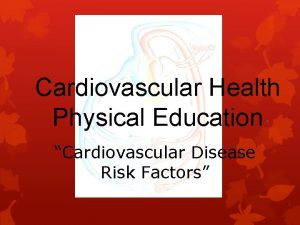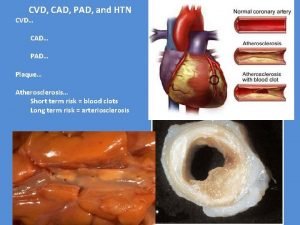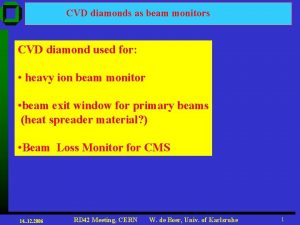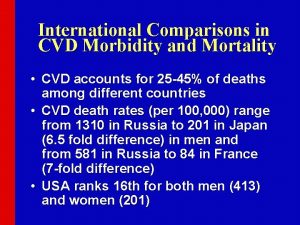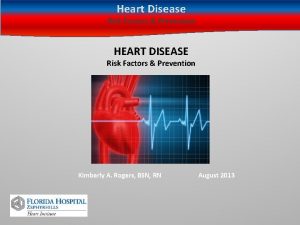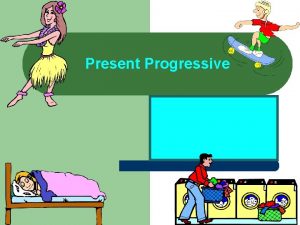Cardiovascular Disease CVD Risk Factors Cardiovascular Disease Progressive








































- Slides: 40

Cardiovascular Disease (CVD) Risk Factors

Cardiovascular Disease • Progressive disease • Build up of fatty tissue (atheroma) in the coronary arteries. • This build up is known as atherosclerosis or arteriosclerosis • This build up gradually narrows arteries • As blood flow is restricted symptoms may develop

Atherosclerosis

What is a risk factor? A risk factor increases the risk of developing the disease. The more risk factors you have, the more likely you will develop the disease. Risk factors for cardiovascular disease can be put into two groups.

Modifiable risk factors • • High cholesterol Physical inactivity High blood pressure Smoking Increased body weight Diabetes Stress Recreational drugs

Non-modifiable risk factors • • Age Gender Genetics / family history Ethnicity

Cholesterol • Fatty substance in the blood known as a lipid. • Essential for cells • Mainly made in the liver but can be found in foods we eat. • Carried in the blood by proteins • Cholesterol + protein = lipoprotein • Two main types LDL and HDL

LDL – low density lipoproteins • Main cholesterol carrier in the blood • Too much builds up in arteries • Leads to atheroma formation Can be increased by – • Increased saturated fat • Genetics • Lack of physical activity • Smoking

HDL – high density lipoproteins • ‘Hoover’s’ up LDL from the cells • Takes it back to the liver • LDL then excreted as a waste product. Can be increased by • Regular physical activity • Alcohol in moderation

High Cholesterol • High cholesterol levels (LDL) have no symptoms but increase the risk of developing CVD. • People who have other risk factors such as high BP, diabetes, obesity or drink alcohol to excess often have high cholesterol.

What you can do • Reduce the amount of saturated fat in your diet • Regular physical activity • Stop smoking • Alcohol in moderation • Take statins as prescribed • Make sure you have a regular cholesterol blood test at your GP’s

Physical activity and exercise Regular physical activity has been shown to reduce the risk of CVD. People who are regularly physically active are less likely to develop diabetes, cancer and many other diseases.

Benefits of physical activity and exercise • • Increases HDL levels Reduces BP Helps with weight control Reduces stress levels

FITT principle • F – Frequency. Needs to be regular • I – Intensity. Feeling warmer, deeper breathing • T – Time. 30 mins per day / 150 mins per week • T - Type. Cardiovascular and strength exercises

Other points • • • Pick something you enjoy Gradually increase the amount of activity Good to ‘buddy’ up with someone Make it part of your everyday routine Incorporate daily activities such as shopping, cleaning and gardening

Smoking • It is one of the major risk factors for CVD • Smokers double the risk of a heart attack compared with non- smokers • 30, 000 smokers have fatal heart attacks each year in the UK • Smokers have a 24% increased risk of developing CVD

Smoking • Eight out of every ten deaths from lung cancer are caused by smoking. • It is associated with lots of other cancers • It can also lead to permanent lung disease such as COPD • Smokers on average die about ten years earlier than non smokers

What’s in a cigarette? • Cigarettes contain over 4, 000 chemicals, including arsenic, formaldehyde and acrolein • Tar • Carbon monoxide • Nicotine

Tar • Sticky substance • Damages cilia - increasing the risk of infections and bronchitis • 70% stays in the lungs • Carcinogenic

Carbon monoxide • • Poisonous gas Attaches to red blood cells Reduces oxygen around the body Smokers have approximately 10% less oxygen than non-smokers • Increases the risk of CVD

Nicotine • Addictive part of the cigarette • Associated with cravings • Stimulates the body to produce adrenaline which increases heart rate and BP

Why is it so dangerous to the heart? • • Increases BP Increases heart rate Damages the inner walls of arteries Reduces the amount of circulating oxygen • Acrolein stops HDL from transporting LDL to the liver • Increases stickiness of platelets in the blood – increases blood clots

Other forms of smoking • Second hand smoke – long term exposure will exposure the person to risks such as CVD and chronic lung disease. • Smokeless tobacco – associated with CVD and cancers. Addiction to nicotine • Shisha (waterpipe smoking) – exposure to large amounts of smoke and chemicals, 20 -80 minutes session may inhale as much smoke as smoking 100 cigarettes. Addiction to nicotine

Its never too late to stop • Stopping smoking has major and immediate health benefits for all smokers. • 8 hours - nicotine and carbon monoxide levels reduce by half. Oxygen level normal. Circulation improves. • 24 hours – carbon monoxide and nicotine leave the body

Its never too late to stop • 48 hours – taste and smell improves • 3 -9 months – coughing and wheezing reduce • 1 year – risk of heart attack reduces by half of that of a smoker • 10 years – risk of lung cancer half that of a smoker • 15 years – risk of a heart attack falls to the same as someone who has never smoked

Don’t give up on giving up • • Lots of NRT therapies Specialist service – support/advice GP Practice nurse

Blood Pressure (BP) Pressure exerted on the walls of the arteries as blood is pumped around Two recordings • Systolic pressure - pressure as blood is pumped out of the heart • Diastolic pressure – pressure as the heart rests Recorded e. g. 130/80

High blood pressure • Medically known as hypertension • Usually no symptoms • Around 30% of the population have high BP (many don’t know it ) • Puts extra strain on the heart and blood vessels • Consistently 140/90 or above – diagnosed as hypertensive

What can increase BP? • • • Physical inactivity Obesity Increased alcohol Increased salt Increased caffeine Smoking Stress Family history Age

What can decrease BP? • • • Regular physical activity Losing weight Healthy balanced diet Reducing alcohol intake Reducing salt Reducing caffeine Medication Relaxation Stopping smoking

Obesity • Term used to describe somebody who is very over weight. • In 2016 in England 25% of all adults were described as being obese • 1 in 5 children aged 10 -11 years are also described as being obese. • Costs to the NHS are millions each year and this is rising.

Why is it a problem? People who are obese are at increased risk of developing – • Heart disease • High blood pressure • High cholesterol • Type 2 diabetes • Some cancers • Depression

BMI – body mass index • • 20 -25 – normal 25 -29 – overweight 30 -40 – obese Over 40 – very obese otherwise known as morbidly obese.

Waist measurement Measure at the widest part • Men 94 cm (37”) or more – increasing health risk • Men 102 cm (40”) or more – high health risk • South Asian men 90 cm (35”) or more – high health risk • Women 80 cm (31. 5”) or more – increasing health risk • Women 88 cm or more (35”) – high health risk • South Asian women 80 cm or more (31. 5) – high health risk

What you can do • Regular physical activity • Healthy balanced diet • Seek help from specialist service - re calorie intake, portion sizes and food labels.

Diabetes • Occurs when the pancreas either stops producing insulin (type 1) • Or (type 2) doesn’t produce enough or the body cells don’t react to insulin known as insulin resistance. • Type 2 more common, over 90% of all adults with diabetes have type 2 • Both types increase the risk of developing CVD

Size of the problem Diabetes is thought to affect around 3. 5 million of the UK population It is thought that 549, 000 are undiagnosed High glucose levels seen in diabetes damages blood vessels People with diabetes are five times more likely to develop CVD

What you can do • Maintain blood glucose levels within healthy range • Maintain a healthy weight • Regular physical activity • Healthy balanced diet • Take medication as prescribed • Attend follow-up’s with GP and specialist services

How to reduce your risks

THANK YOU ANY QUESTIONS?
 Cardiovascular disease risk factor
Cardiovascular disease risk factor Pvd vs cvd
Pvd vs cvd Difference between cvd and pvd
Difference between cvd and pvd Pvd vs cvd
Pvd vs cvd Pvd, cvd
Pvd, cvd Commvault communication ports
Commvault communication ports Market risk assessment
Market risk assessment Chapter 11 the cardiovascular system
Chapter 11 the cardiovascular system Present passive
Present passive Past progressive past perfect
Past progressive past perfect Function of past perfect
Function of past perfect Progressive disease
Progressive disease Progressive disease
Progressive disease Communicable disease and non communicable disease
Communicable disease and non communicable disease Factors that affect disease transmission
Factors that affect disease transmission Iatrogenic factors in periodontal disease
Iatrogenic factors in periodontal disease Factors that influence disease transmission
Factors that influence disease transmission Draw rmmm plan
Draw rmmm plan Risk avoidance
Risk avoidance Absolute risk vs relative risk
Absolute risk vs relative risk Residual risk and secondary risk pmp
Residual risk and secondary risk pmp Ar = ir x cr x dr
Ar = ir x cr x dr Absolute risk vs relative risk
Absolute risk vs relative risk Activity sheet 1 how diversified are these portfolios
Activity sheet 1 how diversified are these portfolios Firm risk scorecard risk classification system
Firm risk scorecard risk classification system Pembelanjaan risiko adalah
Pembelanjaan risiko adalah The biggest risk is not taking any risks
The biggest risk is not taking any risks Key risk indicators for vendor management
Key risk indicators for vendor management Ir x cr x dr
Ir x cr x dr Business risk vs financial risk capital structure
Business risk vs financial risk capital structure Attributable risk
Attributable risk Risk map
Risk map Attributable risk (ar)
Attributable risk (ar) Osmotic demyelination syndrome risk factors
Osmotic demyelination syndrome risk factors Dynamic risk factors
Dynamic risk factors Anaphylactic shock hemodynamics
Anaphylactic shock hemodynamics Criminogenico
Criminogenico What are examples of risk factors?
What are examples of risk factors? Dynamic risk factors
Dynamic risk factors Macrosomia
Macrosomia Central eight risk factors
Central eight risk factors
